Raqs Media Collective's "The Pandemic Circle" explores how artists share and create during quarantine
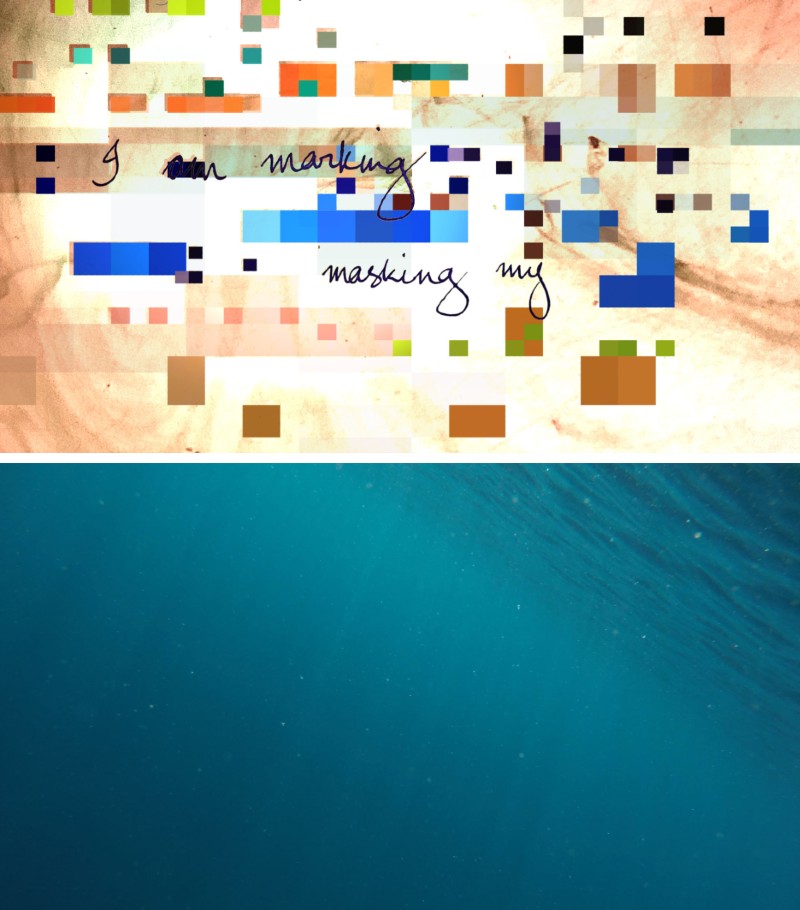
Bottom: video still from twentyfourbyseven (7 mins, video, calligraphy, text, animation), 2020.
On December 1, Raqs Media Collective premiered two new videos as part of an ongoing project titled The Pandemic Circle. This three-part series, curated by STAMPS Gallery’s Srimoyee Mitra, was commissioned by the University of Michigan Stamps Gallery and the Penny W. Stamps School of Art & Design as part of EXPO CHICAGO’s online adaptation of its previously in-person discussions and events series. The focus this time is on ways in which those working within the arts are changing and adapting their practices to continue making and sharing art amid the pandemic.
The virtual exhibition includes three short films that explore themes of time, space, and routine, and, more. As described on the exhibition page, the works “grapple with the pervasive and dispersed impact on daily routines and relationships with one another, and beyond, in the age of the Coronavirus." The two new videos are paired with 31 Days, created earlier this summer, three months after the pandemic ushered in sweeping quarantines across the globe and changing the flow of daily life. The follow-up films expand upon the members of the Collective’s response to these changes, broader cultural events, and their own worlds.
Review: Wynton Marsalis with The Jazz at Lincoln Center Orchestra Septet: The Democracy! Suite
Over the Thanksgiving weekend, the University Musical Society released a digital presentation of jazz trumpeter and composer Wynton Marsalis and The Jazz at Lincoln Center Orchestra Septet performing his new composition, "The Democracy! Suite," in a virtual concert filmed at the Frederick P. Rose Hall in New York City.
Marsalis usually visits Ann Arbor every year and often brings special guests with him to play at Hill Auditorium, but this year’s concert was virtual due to the pandemic.
"The Democracy! Suite" is an eight-part response to the political, social, and public health crises we’re dealing with today. The swinging grooves and lyrical jazz was composed to uplift, inspire, and galvanize listeners to work together for a better future.
But what made "The Democracy! Suite" feel different was the commentary Marsalis gave behind it.
Map of the Interior: Sarah Rose Sharp’s "Results or Roses" at U-M Institute of the Humanities Gallery
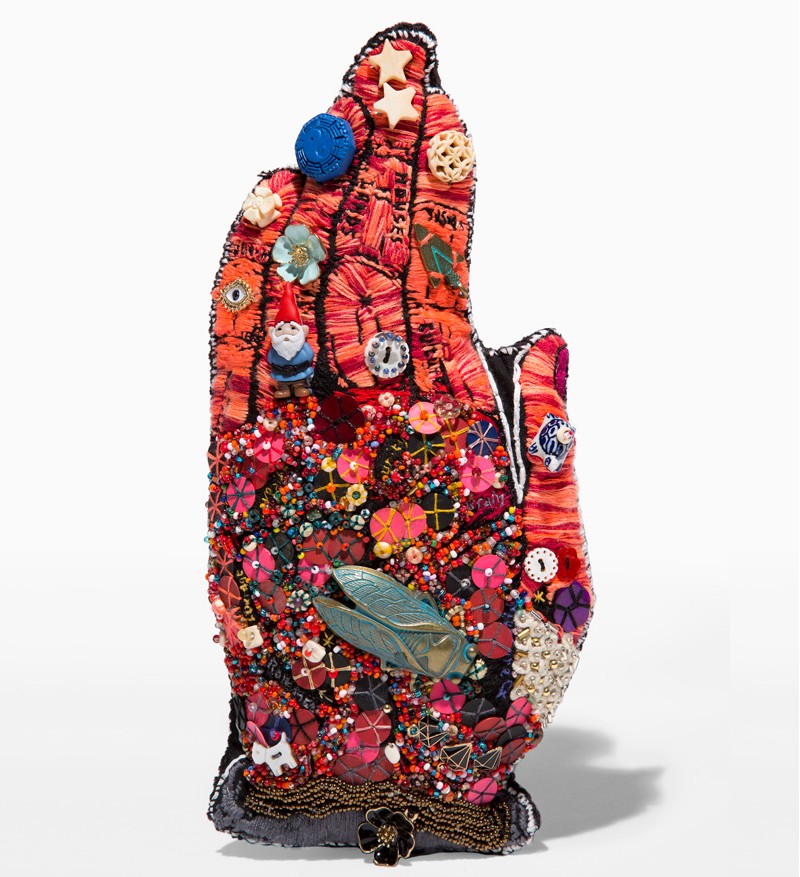
During these Covid times, visual artists’ exhibitions have migrated to online locations, with mixed results. For some whose work is photographic or text-based in nature, the effect is hardly noticeable. But for artists making very tactile or three-dimensional work, like the artworks in Detroit artist Sarah Rose Sharp’s Results or Roses at U-M Institute of the Humanities Gallery, much is lost in translation. I felt some guilty delight when the gallery curator, Amanda Krugliak, consented to open the gallery (now temporarily closed to the public during the pandemic) for my visit, but you can still view the exhibit online.
Sharp employs traditional needlework and sewing techniques to create a diaristic map of her interior life. The intimately scaled artworks illustrate several different trains of the artist’s thought and share the walls of the gallery and an adjacent vitrine, providing a virtual tour of the artist’s memories, observations, and preoccupations. The overarching intention of the work seems to be located somewhere in the psychic territory between nostalgia and satire.
Joni Mitchell's "Live at Canterbury House - 1967" gives us a peek into her post-Detroit, pre-superstardom career

Two noteworthy events happened for Joni Mitchell over the past two weeks:
She turned 77 on November 7, and on October 30, the much-anticipated box set Archives - Volume One: The Early Years (1963-1967) came out.
Included in this collection are 24 songs recorded live over three sets on October 27, 1967, the first night of Mitchell's three-night residency at Ann Arbor's Canterbury House. The Ann Arbor portion of Archives is also available as a standalone three-LP set, and the performance features several songs that would later be considered classics after they appeared on Mitchell's studio albums such as her debut, Song to a Seagull (1968), as well as Clouds (1969) and Ladies of the Canyon (1970).
Mitchell's Canterbury House recordings surfaced in July 2018 along with concert tapes of Tim Buckley, Dave Van Ronk, Odetta, and more, but hers are the first from this batch to find a commercial release. The concert was recorded through Canterbury's soundboard, and the audio is clean and clear, giving us a beautiful glimpse into the almost-24-year-old's musical life pre-superstardom.
In-Sync Siblings: Sheku Kanneh-Mason and Isata Kanneh-Mason's concert for UMS
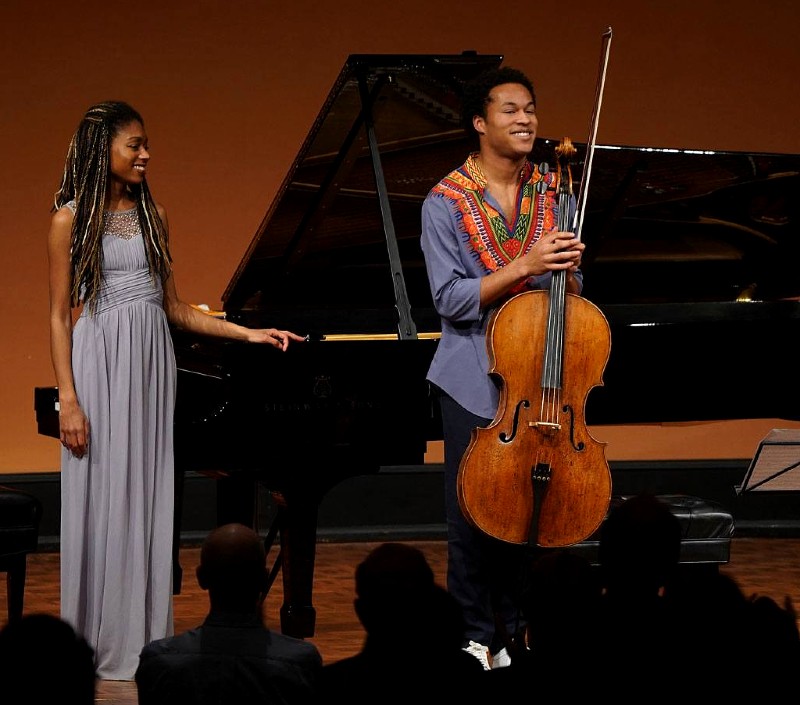
On October 25, siblings Sheku Kanneh-Mason (cello) and Isata Kanneh-Mason (piano) played a free concert exclusively for UMS from the music room of their home in Nottingham, England. Presented by U-M alum and NFL great Braylon Edwards, the concert was available to stream through November 4 on UMS’s website.
Sheku was supposed to play in Ann Arbor twice this year: once with the Chineke! Orchestra and another performance with the City of Birmingham Orchestra and Chorus but both performances were canceled.
Like many others, I was introduced to Sheku Kanneh-Mason when he performed at Prince Harry and Meghan Markle’s 2018 royal wedding, an event watched by more than two billion people worldwide. During that performance, he played with an intense connection to his instrument that was admirable and captivating. Sheku's won the Classic Brit Award and the Royal Philharmonic Society Young Instrumentalist Duet Prize, and he's also released two albums to date, Inspiration and Elgar. Isata is also a wonderful artist who released her debut album, Romance, which topped the UK classical charts in 2019. She’s also currently a graduate scholar at London’s Royal Academy of Music. The duo and their five other siblings make up the classical group The Kanneh-Masons, once called the “world’s most talented family” by Simon Cowell. The group just released their first album, Carnival.
Ken Fischer makes the case for collaboration and connectivity in his book "Everybody In, Nobody Out"

This post contains two sections: a book review and a brief interview with Ken Fischer.
On June 1, 1987, Ken Fischer became the sixth president of the University Musical Society at the University of Michigan.
That date marks the beginning of 30 years of transformation, innovation, and collaboration.
Fischer’s Everybody In, Nobody Out: Inspiring Community at Michigan’s University Musical Society written with Robin Lea Pyle is a book of many parts. It is a memoir, an insider’s view of some of the leading performance artists who come each year to Ann Arbor and, perhaps most important, a guide on how to operate a non-profit by reaching out to and connecting with the community at large.
The title comes from Patrick Hayes, a mentor to Fischer and former head of the Washington Performing Arts Society. Hayes had developed a policy for art presentation that emphasized inclusion at every level. His policy was "Everybody In, Nobody Out" and it became Ken Fischer’s mantra.
“It was about making connections and forming partnerships for everyone’s enrichment,” Fischer writes. “The great thing about collaboration was that it could be the foundation of everything we needed to do as an organization: secure outside sources of funding, raise our visibility in the community, expand our audience, gain new insights, and build enthusiasm for working on new projects.”
Fischer’s book is a short history of those collaborations with the university, with world-class performers, with other local arts groups, and with local and national businesses and philanthropists.
But first a prelude.
Ordinary People: UMMA's "Take Your Pick: Collecting Found Photographs" asks us to help curate the everyday
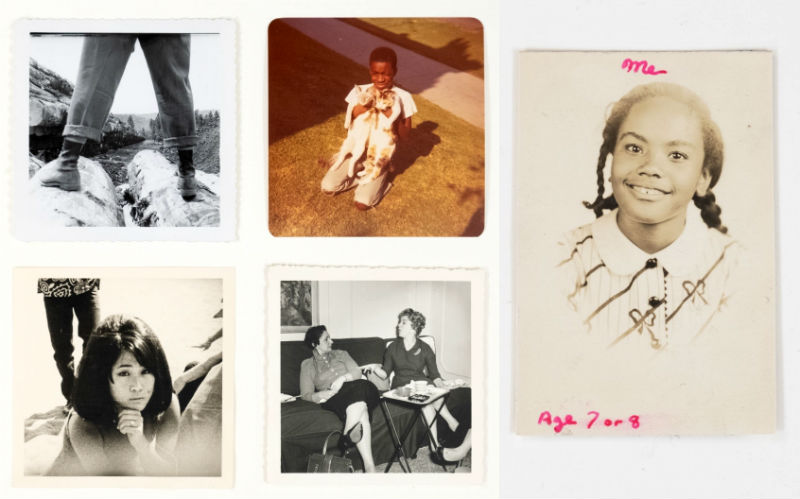
This review was originally published October 8, 2019. We're rerunning it because UMMA just launched a virtual version of this exhibit featuring 250 photographs that visitors selected to enter the museum's permanent collection. View the online exhibit and learn about the history of snap photography here.
In the University of Michigan Museum of Art’s latest photographic exhibit, Take Your Pick, viewers are asked to participate in the selection of images to be added to the permanent collection. UMMA asks us to head to the gallery and look at the 1,000 amateur photographs collected by Peter J. Cohen and decide on our 20 personal favorites. Ballots are available at the entrance of the gallery, with 20 slots to vote for your favorite photographs. On the exhibit's webpage, potential visitors are asked to “Come help build [UMMA's] collection of ‘ordinary’ American 20th-century photographs.” With an emphasis on the word ordinary, the curatorial team is asking viewers to consider how “ordinary” photographs of the 20th century may be reconsidered as objects worthy of preservation and study.
The photographs on display are part of a larger collection of 60,000 snapshots collected by Peter J. Cohen. Cohen acquired his collection by searching through flea markets and buying online. The majority of the images portray candid American life, distilled imagery of private family life: birthday parties, family vacations, school portraits.
A2SF's "The Future of the Arts Must Be Antiracist" explores the pitfalls P.O.C. face in creative communities
As a finale to its virtual Top of the Park series, the Ann Arbor Summer Fest (A2SF) had a vital discussion called "The Future of the Arts Must Be Antiracist" on July 7 about racism in the arts, streamed live on YouTube and other platforms.
While we’ve seen many discussions on race as of late, this one was particularly interesting because it addresses an issue that has been looming for a long time in Washtenaw County: the lack of racial diversity inside the local arts scene.
As a Black classically trained musician, I’ve had my fair share of feeling like an outsider in musical circles so I was delighted by this discussion. Lack of diversity is not unique to Washtenaw County, of course; it plagues all of society. But it was refreshing to hear the topic addressed in a city like Ann Arbor where there is such an influential arts festival like A2SF.
A2SF Programming and Operations Manager James Carter invited several prominent Washtenaw County Black artists and executives to describe their experiences working in the arts here. The panel consisted of Jamall Bufford, Omari Rush, Jenny Jones, and facilitator Yodit Mesfin Johnson, who talked about their backgrounds and described why it’s important to create a more inclusive environment for African-Americans in the arts.
Exploring some of Washtenaw County’s lesser-known nature preserves

For many Washtenaw County residents, one of the great joys of living in the area is the easy access to a plethora of hiking trails and nature preserves. Just moments from downtown Ann Arbor are areas where one can find peace and tranquility, look for birds and wildlife, and enjoy beautiful spring wildflowers and vibrant fall colors. Some of the larger and more well-known preserves are fairly popular -- you’re almost guaranteed to encounter runners, dog-walkers, and explorers in Bird Hills or at Argo Nature Area at any time of year. But, many of the smaller preserves in Washtenaw County are less trafficked and are the perfect place to find some moments of solitude and natural beauty, especially during times when gathering in crowded areas isn’t recommended. Unsure where to begin? Here are a few of the more remote preserves in the area that might be new to you.
Open Your Eyes: SculptureWalk Chelsea trusts viewers to cut through the clutter and take in the art
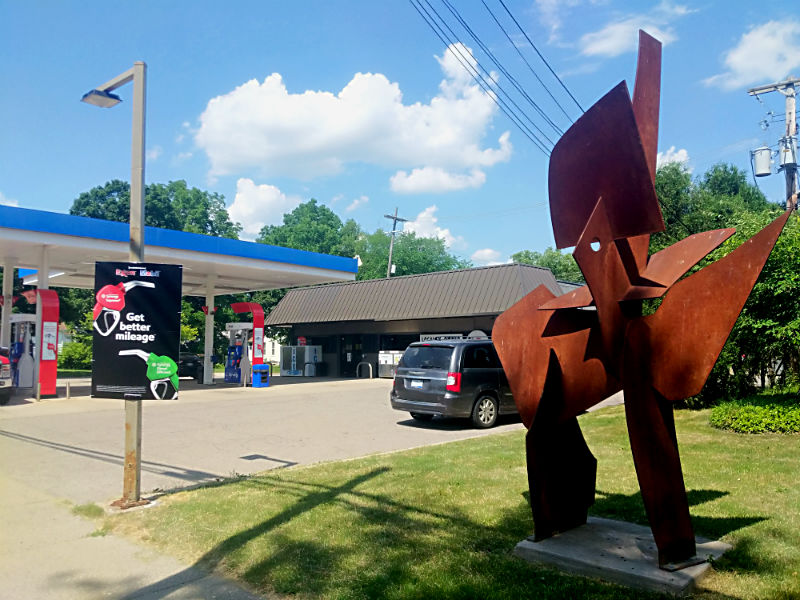
The 12th annual SculptureWalk Chelsea launched recently, and I spent a steamy Friday afternoon strolling through the downtown in search of not just art but a sense of calm and normalcy in a year that’s been anything but.
I’ve been in Michigan for almost four years, and I’ve been to Chelsea before, but I never made it to SculptureWalk. Or more accurately, since the sculpture is on display for a year, I never noticed there was sculpture on my walks.
This is a common thing with public art installations: they blend into the areas in which they’re placed, becoming part of the background with the trees and buildings. This doesn’t devalue these creations, or the communities who put in the work, time, and money to commission and display these pieces of art; it’s just a fact and one that must be overcome with purposeful viewings.
As I walked around Chelsea, I spent several minutes with the 14 creations featured in the 2020-2021 SculptureWalk, first considering them against their backgrounds -- whether a building, telephone, or the Jiffy plant -- and then narrowed my vision to the pieces themselves, ultimately finishing by focusing on the smaller details in each work.
But my mind kept returning to considering how the sculptures related to their backdrops and their placements along the walk, which stretches from M. Saffell Gardner’s Sankofa next to the Mobile Station at the corner of Main Street and Van Buren to Jeff Bohl’s Early Bird near the parking lot at Main and Buchanan Street, with several side-road stops along the way.
I guess I was less concerned about evaluating all of the sculptures -- which, reductively speaking, range from pleasant to excellent -- but rather my reactions to purposefully looking at the works after the three previous years of not even noticing them. These are some of the sculptures and scenes that stood out to me the most.


































